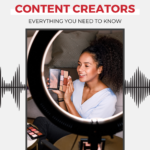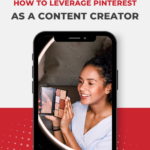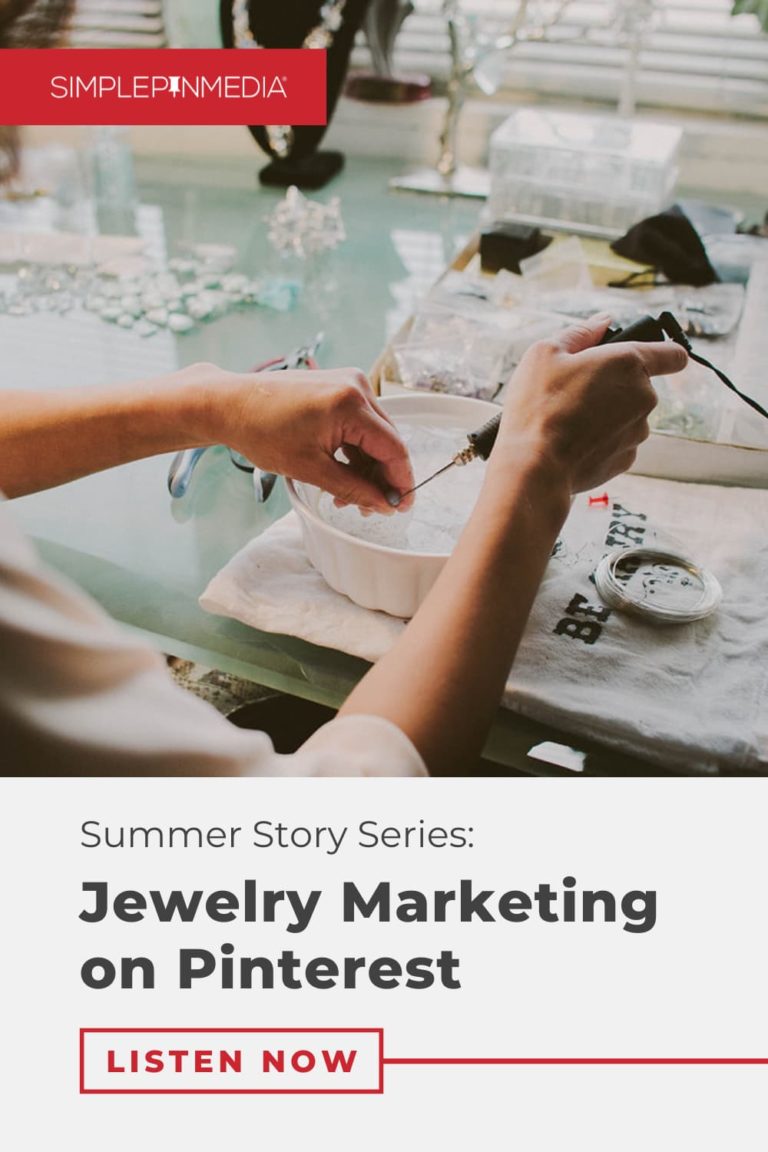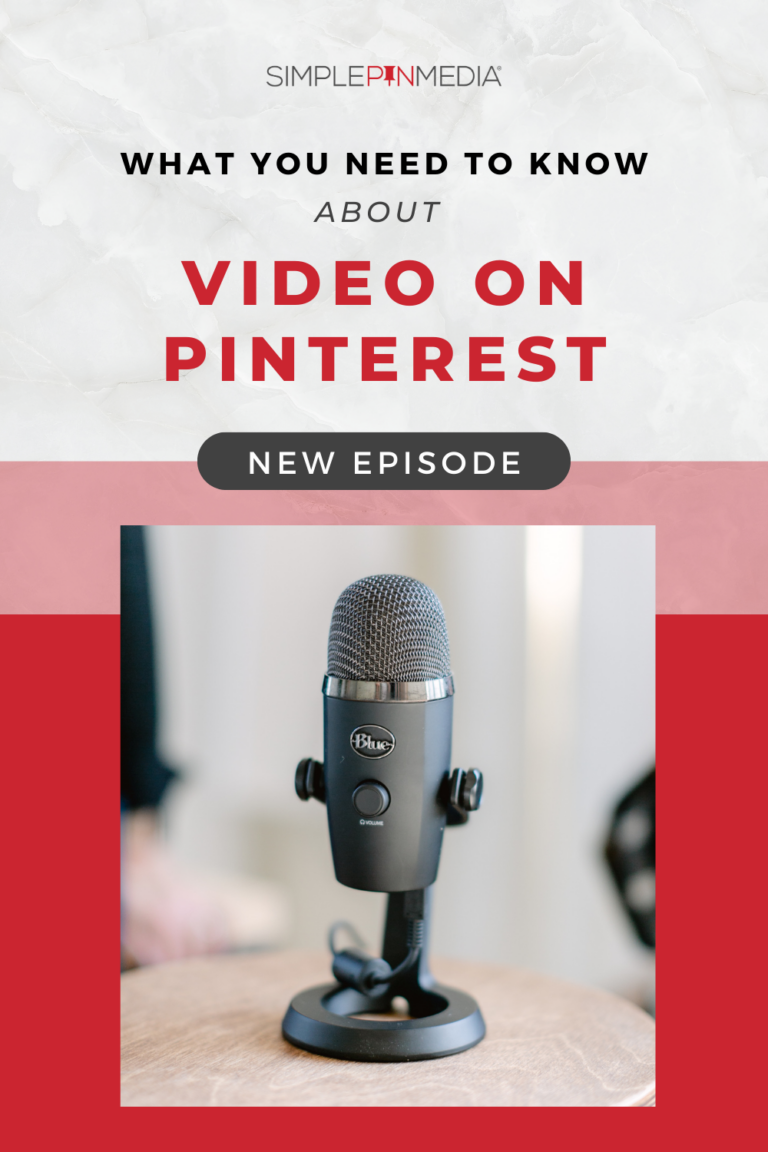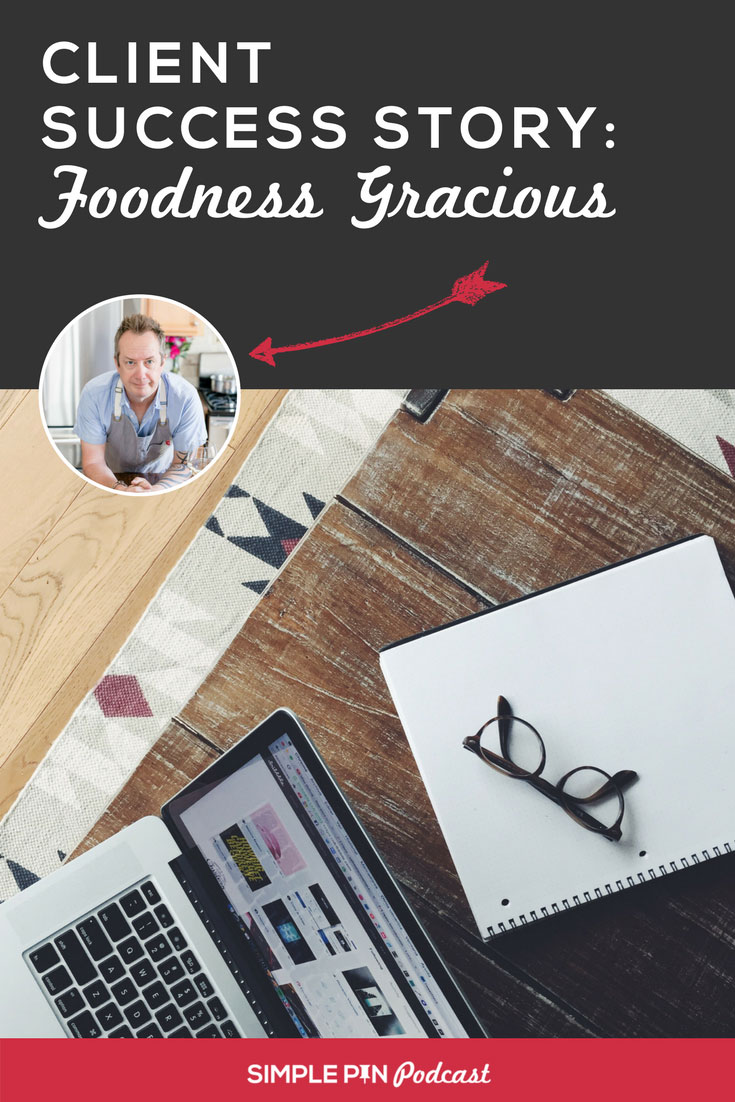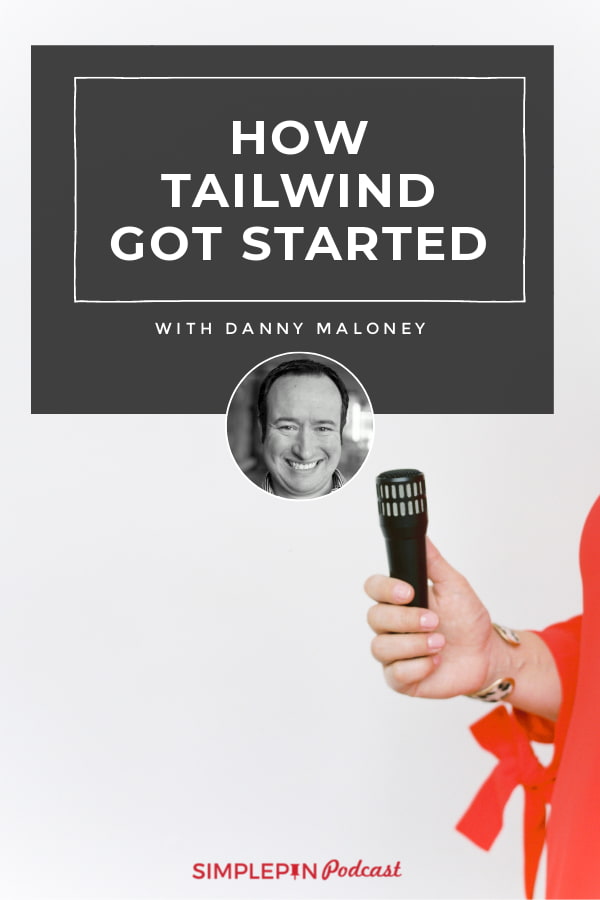In this episode, we’re talking about how Pinterest works for the content creator. Creator, blogger, YouTuber, content creator. You’ve probably heard all these names for someone who creates content.
A creator is someone who uses a platform, creates content for that platform, and assumes their growth will be slow and steady. Some people can have something go viral on TikTok, but for the most part, growth is pretty slow.
“Content” can be described as mostly organic (not paid), engaging, solid content that keeps their audience coming back over and over.
So how do content creators leverage Pinterest for this growth? That’s what we’re diving into in today’s episode.
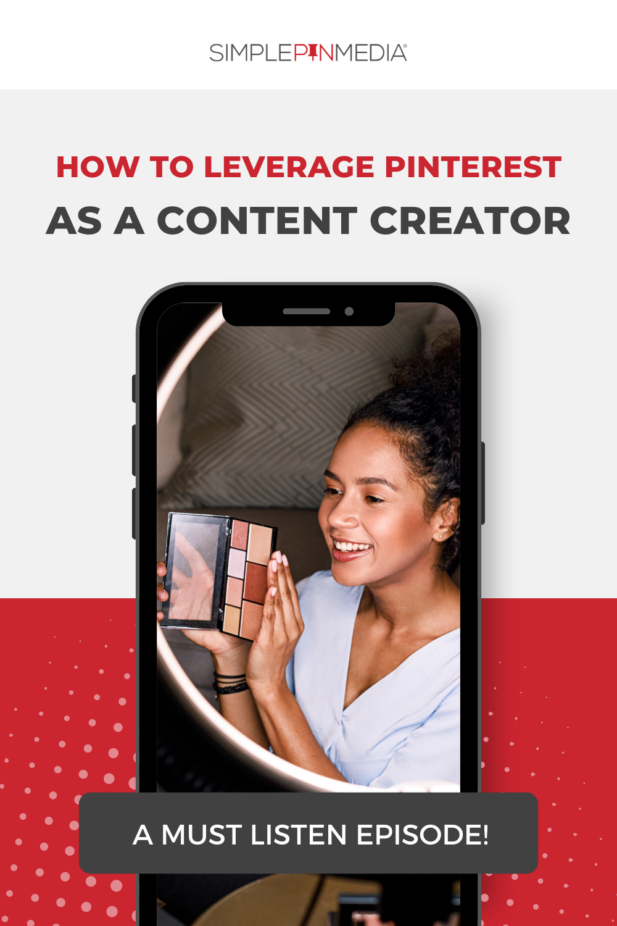
what is a content creator?
Adobe says a content creator is someone who uses entertaining or educational material to be expressed through any medium or channel.
Content creation especially pertains to digital content, since that’s where the majority of content is consumed right now. For businesses, content creation can mean crafting newsletters, writing emails, writing digital marketing materials, brochures, social media posts, annual reports, etc.
For an individual, content creation can mean creating content for social media like live streams, vlogs, or other photo or video content, with the intent of interacting and resonating with their target audience.
On Pinterest, they call those who use the platform for business – creators. For those who use the platform for personal use – Pinners.
RELATED: What does it mean to be a Pinterest creator? (podcast/blog post)
Kate recently recorded a podcast episode with Molly Keyser, and something at the end of the conversation sparked something for her. There is a difference between being a creator and being a digital marketer. Here at Simple Pin, with the content we have, we are creators versus digital marketers.
Often times in the online industry, the terms get interchanged. While most of us have the ability to do both, we usually see that people gravitate towards one or the other.
RELATED: What is Content Marketing with Joe Pulizzi (podcast/blog post)
For this episode, we’ll assume that people have content. What should content creator focus their efforts on? With everything they have, where is the best place or where have they been distributing their content?
Here at Simple Pin, we started with newsletters. We moved to a blog/website, and then started a podcast. This was not overnight. Our first website was so boring, just functional. It’s okay to start with something super basic.
We worked to upgrade and redesign the site. We moved to a more consistent newsletter format and weekly delivery time. We realized that our education and knowledge needed to reach a broader audience, so we decided to add a blog portion to our website and started recording a podcast.
With the podcast, we intentionally created a blog post to go along with it, so we could get some good juice from Google search. We wanted our main website, simplepinmedia.com, to be a hub for all things Pinterest. A library of information, if you will.
The next step was to get more people on the newsletter list, so more people were listening to the podcast, reading our blog posts, and learning more about Pinterest.
We created a Pinterest marketing calendar that we gave away for free, in exchange for an email address. Once they got on the list, they’d receive our email newsletter that included links to our newer content and podcast episodes.
how do you know what to focus on?
While it’s tempting to focus on all the platforms and all the different types of content, it’s important to find what works for you and what you’re best at. Don’t try to spread your content to all the places. Find where your people are, where they interact, and figure out how to interact in the best way with them on that platform.
Find what works for you, what you feel the most comfortable with, and lean all the way in.
Where are your people? If you have a feeling (or the data tells you) that your people are on Pinterest, we encourage you to dive in and learn more for yourself. Start to Pin on Pinterest (if you aren’t already), and just see how it goes.
If you’re new to Pinterest and aren’t sure HOW to pin, start here.
leveraging pinterest for content creators
Blogging is one of the keys to Pinterest marketing. We see it over and over and over again.
But we also get the question, especially from people who sell products – Do I HAVE to create content alongside creating products?
We’ve consistently seen that if you’re not creating some type of content at least 1-2x per month (a short or long form blog post, for example), it will slow your growth.
Something, anything, can help you warm up a potential audience, and loop in more potential buyers.
Our Simple Pin Framework can be really helpful in helping you decide what type of content you need to create for YOUR people. It’s based on the the idea that businesses owners or creators fall into one of three categories – Inspire, Inform, or Decide.
Listen in the Simple Pin Framework episode if you want to learn more.
Another type of content that works well on Pinterest is short-form video.
Pinterest recently moved away from Idea Pins to JUST short-form video.
Do you already create long-form video content on YouTube or another platform? Make a short teaser video and put that on Pinterest!
We recommend less than about 1:30, mostly because Pinners don’t come to Pinterest to watch a long video. They’re there to watch a short trailer, a quick DIY tip, or find a recipe or solution to an issue they’re having.
You can also repurpose Reels or YouTube shorts on Pinterest.
QUICK TIP: Don’t upload to Instagram, and THEN download your video. Use the raw video footage you have, and upload that natively to Pinterest.
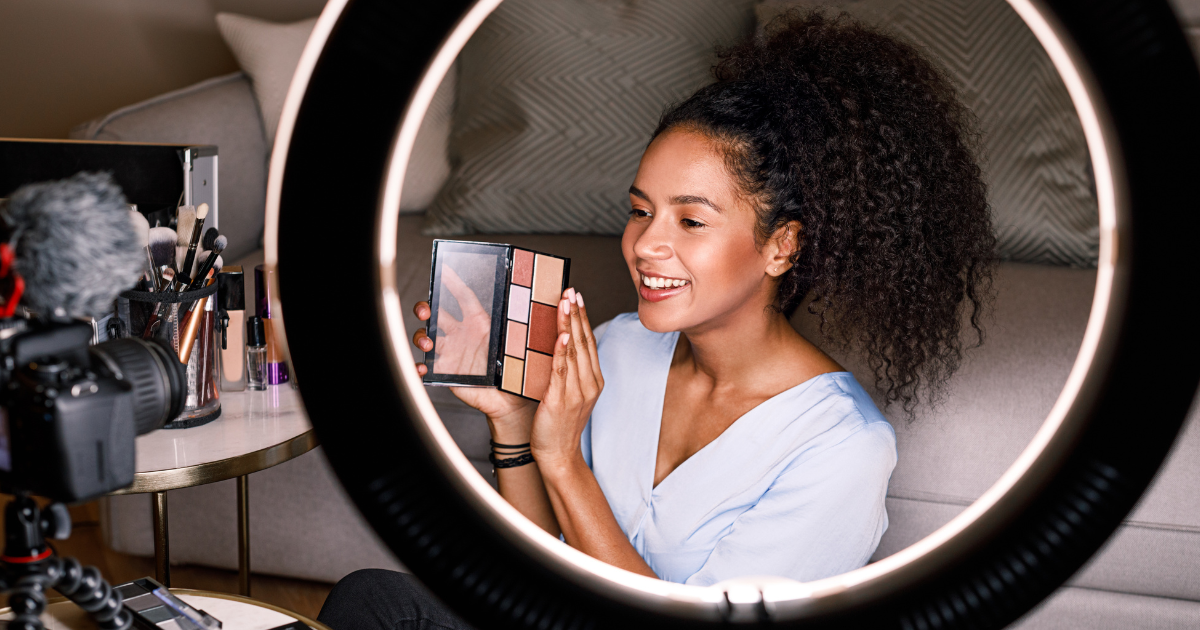
how often should you pin?
Consistency is the most important here. If you’re new to Pinterest, one Pin per day is fine. But don’t pin 20 Pins one day, and then nothing for a few weeks.
Here at Simple Pin, we have about 350 blog posts/podcast episodes, and we pin at least 10x per day. Some of our posts have multiple Pin images, so we can spread them out a bit more. We also incorporate Instagram Reels and YouTube shorts into the mix, so we’re able to get more bang for our buck.
But again, consistency is what is most important.
WHY IS PINTEREST THE BEST PLACE FOR THE CONTENT CREATOR?
Because it’s where your content gets seen by people who don’t know you!
Pinners are, most of the time, just looking for ideas or a solution to their current problem or inspiration. They’re looking for products. They’re looking for tips.
If you frame your content well on Pinterest, these “cold” users will find you.
It’s important to note that Pinterest is a marathon, not a sprint. It can take months to really see some traction on the platform. But this doesn’t mean it’s not worth it.
Pinterest can bring traffic in the way that Google or YouTube brings traffic. They’re all a “search and discovery” type platform.
To finish up, it’s important to note that there are two very different types of brains in this online marketing space. There are people who love to create and people who love to market their products or services.
There is pressure to be both in 2023, and if you’re more proficient in one over the other, that’s to be expected. In fact, it’s probably best. We need people and brains of all stripes, shapes, and sizes.
Additional Resources Covered:
Simple Pin Products and Resources:
- Simple Pin Media’s Pinterest Marketing Services
- Simple Pin Chronicle – Help for planning and managing your content (Simple Pin Shop)
- Use video Pins on Pinterest to showcase your content in an engaging way (YouTube video)
